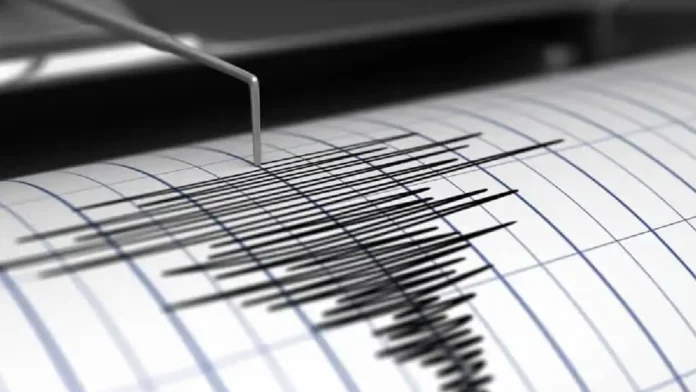6.9 magnitude quake strikes Japan in the Kyushu region, triggering temporary tsunami warnings that were lifted after three hours. The earthquake, which occurred off Miyazaki Prefecture on Monday night, highlights Japan’s ongoing seismic challenges as a country located on the Pacific Ring of Fire.
Details Of The Earthquake And Tsunami Warnings
The Japan Meteorological Agency (JMA) reported the earthquake struck at 9:19 PM local time with a magnitude of 6.9 on the Richter scale.
Key Facts About The Earthquake:
- Location And Depth:
- Epicenter: Off Miyazaki Prefecture.
- Depth: 37 kilometers, according to the European Mediterranean Seismological Centre (EMSC).
- Intensity:
- Registered a lower 5 on Japan’s seismic scale of 0 to 7 in the hardest-hit areas.
- Tsunami Warnings:
- Advisories issued for Miyazaki and Kochi prefectures with waves expected up to 1 meter (3.3 feet).
- A 20-centimeter (7.8 inches) tsunami was recorded in Miyazaki city.
- Resolution:
- Warnings were lifted close to midnight after no significant damage or injuries were reported.
Nuclear Plants Report No Abnormalities
The Ikata Nuclear Power Plant in western Japan and the Sendai Nuclear Power Plant in Kagoshima prefecture reported no safety concerns following the quake. Japan’s stringent safety protocols ensure nuclear facilities are equipped to handle seismic events.
Japan’s Vulnerability To Earthquakes
Japan’s susceptibility to earthquakes stems from its position at the convergence of four tectonic plates: the Pacific, Philippine Sea, Eurasian, and North American plates.
The Pacific Ring Of Fire:
- Japan is part of this seismically active region, experiencing frequent earthquakes and volcanic eruptions.
- The region accounts for about 90% of the world’s earthquakes.
Recent Earthquakes In Japan
2024 Earthquakes:
- August 8, 2024:
- Two earthquakes of magnitudes 6.9 and 7.1 struck Kyushu and Shikoku.
- Tsunami warnings were issued, but no significant damage occurred.
- January 1, 2024:
- A devastating 7.6 magnitude earthquake hit Suzu, Wajima, and nearby areas, claiming over 300 lives.
2025 Earthquake:
The latest 6.9 magnitude quake in Kyushu underscores the need for vigilance and preparedness.
Tibet Earthquakes: A Grim Reminder
The Kyushu earthquake followed a series of tremors in Tibet’s Tingri County on January 7, 2025:
- Six earthquakes struck the region, including a powerful 7.1 magnitude quake.
- Casualties: 126 deaths, over 300 injuries, and significant structural damage.
- Tremors were felt in neighboring countries, including India, Nepal, and Bhutan.
Japan’s Earthquake Preparedness
Japan’s advanced earthquake preparedness systems minimize the impact of seismic events:
- Early Warning Systems:
- JMA provides real-time alerts to warn residents of impending tremors.
- Infrastructure Resilience:
- Buildings and public infrastructure are designed to withstand significant seismic forces.
- Public Awareness Campaigns:
- Regular drills educate citizens on safety protocols during earthquakes.
Global Perspective On Seismic Activity
Earthquakes like those in Japan and Tibet emphasize the global importance of seismic research and disaster management.
Collaborative Efforts:
- International cooperation is crucial for developing early warning systems and sharing best practices.
Addressing Secondary Disasters:
- Earthquakes often trigger secondary disasters like tsunamis and landslides, necessitating comprehensive disaster response plans.
Economic And Social Impacts
Frequent seismic events in Japan affect its economy and societal stability:
- Economic Costs: Infrastructure damage and disaster recovery strain national resources.
- Mental Health: Repeated exposure to natural disasters impacts citizens’ psychological well-being.
Looking Ahead: Strengthening Preparedness
Japan’s ability to handle earthquakes sets a global benchmark for disaster management:
- Innovation In Safety Measures: Continued advancements in construction technology and early warning systems.
- Community Resilience: Strengthening community-based disaster preparedness programs.
A Nation’s Resilience
The 6.9 magnitude earthquake in Kyushu is a reminder of Japan’s resilience and commitment to safety. Through advanced systems, robust infrastructure, and community engagement, the nation continues to navigate the challenges of its geographic location.
As the world watches Japan’s response, the global community can learn valuable lessons in disaster preparedness and resilience.



